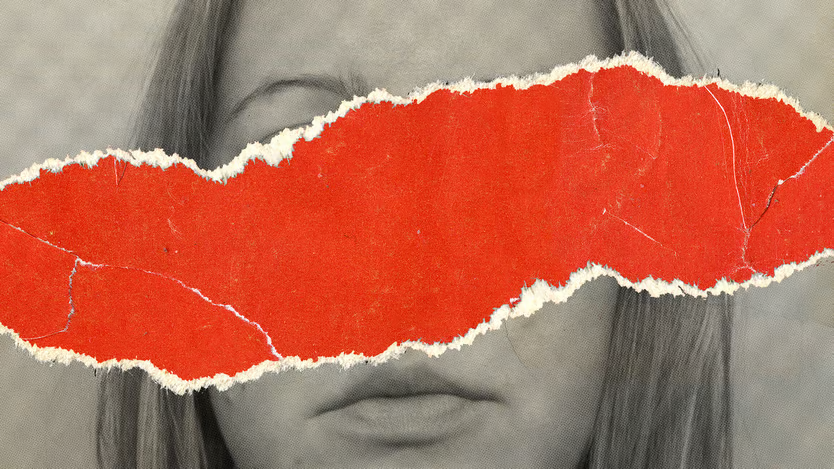
Economist Reading and Analysis -5th
本文最后更新于 2025-11-10,墨迹未干时,知识正鲜活。随着时间推移,文章部分内容可能需要重新着墨,请您谅解。Contact
It increasingly looks as if Lucy Letby’s conviction was unsafe
-The case of a nurse jailed for killing babies exposes deep problems with British justice
Audio
Original Text

IS LUCY LETBY guilty? The question has persisted since August 2023, when a jury found the nurse had murdered seven babies and tried to kill six others at the Countess of Chester hospital in north-west England. In the eyes of the state, for a long time any doubt over the conviction amounted to nothing more than a false conspiracy theory. Ms Letby has had two appeals rejected; in July 2024, in a retrial preceded by nine months of reporting restrictions, a second jury found her guilty of another count of attempted murder. An ongoing public inquiry is predicated on her guilt. Its chair, Lady Justice Thirlwall, dismissed the speculation about the case as “noise”.
Yet the doubts have grown. What started with a few sceptics became weightier with a New Yorker article and questioning by statisticians. Now eminent scientists and politicians are concerned, too. At a press conference in London on February 4th an international team of neonatal experts led by Shoo Lee, a retired Canadian neonatologist, concluded that all the deaths and injuries blamed on Ms Letby were in fact due to natural causes or medical errors. The findings have been sent to the Criminal Cases Review Commission (CCRC), an independent body with the power to refer cases back to the courts.
None of the experts goes so far as to claim that Ms Letby is innocent. The question is whether her conviction was based on unreliable evidence, and was thus, in legal terms, unsafe. If so, the nurse could be the victim of one of the highest-profile miscarriages of justice in British history. Regardless of the outcome, the case raises troubling questions about the workings of the British state.
Part of the complexity lies in the fact that the case against Ms Letby was entirely circumstantial. There were no eyewitnesses, forensic evidence or motive to speak of. There was, however, a sharp increase in the Countess of Chester’s neonatal deaths. Over a period of 13 months in 2015 and 2016, 13 babies died, an unusually high number compared with the two or three deaths in previous years. Suspecting foul play, doctors accused Ms Letby, the nurse on shift during most of the incidents. Eventually the hospital trust reported the case to Cheshire Constabulary.
From the outset the police relied on flawed statistical analysis to build their case. They asked Jane Hutton, a medical statistician at the University of Warwick, to calculate the probability that one member of staff could so often happen to be on duty when the deaths or collapses occurred. Such an approach would be wrong, Professor Hutton told them: it risked equating a low probability of a series of events occurring with a high probability of guilt. Before looking for a suspect, they should first consider all possible explanations, she suggested. The police agreed to this analysis, but later dropped it as a line of inquiry on the advice of the Crown Prosecution Service (CPS).
The bulk of the case rested on medical evidence, interpreted for the jury by expert witnesses over ten months. Dewi Evans, a retired consultant paediatrician who had offered to help, was the prosecution’s star witness. He spoke confidently about how the babies’ sudden collapses and deaths had occurred: the only possible explanations, he argued, were that they had been variously injected with air, force-fed with milk, inflicted with trauma and poisoned with insulin.
Yet here too the evidence is not without controversy. During the first trial it emerged that a judge in another case had criticised Dr Evans’s testimony as partial and “worthless”. Dr Lee got involved after seeing that Dr Evans had misinterpreted a paper he had co-authored in 1989 on air embolisms. The 14 experts from some of the world’s best child-health institutes examined 17 cases involved in the trial. “We did not find any murders,” said Dr Lee.
Instead they found explanations never heard by the jury. Many of the babies were premature and low-weight with chronic problems, making them more likely to die from natural causes. Most were cared for poorly. In one case the panel found that, rather than the air embolism Dr Evans had diagnosed, the baby had probably died of sepsis and pneumonia after her mother had not been given antibiotics soon enough. In another, the prosecution said Ms Letby had inflicted trauma to a baby’s liver, but the panel concluded that a traumatic birth had caused the injuries.
Even the notion that two babies had been poisoned with insulin, a theory accepted on the stand by Ms Letby (while denying that it was she who did it), was contradicted. The panel said the theory had been premised on an incorrect interpretation of blood tests: the babies’ insulin levels were within the normal range for preterm babies, the doctors said.
Beyond any individual errors, the neonatal unit at the Countess of Chester hospital also appears to have been fundamentally unsafe. Inadequate staffing, poor leadership and delays in seeking advice were picked up in a report in 2016 by the Royal College of Paediatrics and Child Health, a professional body—in keeping with shortcomings found in inquiries into other maternity scandals in England. In a statement to the Thirlwall inquiry, one father recalled seeing a nurse googling how to do a lung drain on his triplet.
Data from the Care Quality Commission, a regulator, suggests that the hospital failed to report two of the deaths attributed to Ms Letby. This included one baby who died of respiratory complications, exacerbated by a drug-resistant bacteria detected in her tracheal tube. At the trial an estate plumber described how there would sometimes be “sewage floods” in the unit. Poor plumbing, the panel noted, could be a factor in the bacterial infection. The hospital was slow to downgrade the unit after the spike in death rates, and had no robust procedures for investigating deaths. “If this was a hospital in Canada, it would be shut down,” said Dr Lee.
None of this proves that Ms Letby is innocent. The prosecution relied on other circumstantial evidence: the confidential handover sheets Ms Letby hid under her bed as “trophies”; the handwritten notes (“I am evil, I did this”), though they may have been written as therapy. But in a case built on weak foundations, large cracks are appearing. “I think it’s beyond reasonable doubt that this conviction is not safe,” says Professor Hutton. “Not only that, in my opinion, it’s beyond reasonable doubt that there should never have been a trial.”
Back to court?
Whether the case collapses is another matter. Ms Letby’s defence team failed to present any of the new evidence during the trial—and appeals require fresh evidence that could not have previously been considered. The only witnesses the defence called were Ms Letby and the plumber. “Our system in this country is very much one bite of the cherry,” says Glyn Maddocks, a lawyer who has successfully appealed miscarriages of justice. He points out that successful applications to the CCRC are incredibly rare.
Still it seems “quite likely” that the CCRC will refer the case back to the Court of Appeal, reckons Lord Ken Macdonald, a former head of the CPS. In part this is because the review body is still reeling from the recent high-profile case of Andrew Malkinson, who spent 17 years in prison after being wrongly convicted of rape. It will not want another. Yet any decision will take time, not least because the CCRC is badly underfunded. What the appeal court would do in the event of a referral is also hard to predict.
Whatever happens, the case has not only revealed horrors in the way hospitals care for babies. It has exposed deep flaws in the criminal-justice system, and risks further undermining faith in the law. “Surely it is telling us as a nation that we need to reflect on whether our processes are working as we would want them to,” says Professor Neena Modi, a neonatologist, who was also on the expert panel. Doing so will bring new heartache to the victims’ families. But the safety of future victims depends on it. ■
Analysis
1. Overview of the Case Against Lucy Letby
- Conviction Details: Lucy Letby was convicted by a jury for murdering seven babies and attempting to kill six more between 2015 and 2016.
- Nature of Evidence: The case was built entirely on circumstantial evidence, lacking eyewitness testimonies, forensic proof, or a clear motive. The primary basis was a statistical anomaly showing an increase in neonatal deaths during her shifts.
2. Emerging Doubts and Challenges to the Conviction
-
Expert Scrutiny:
- Statistical Flaws: Jane Hutton, a medical statistician, criticized the initial statistical approach used by the police, arguing that a low probability of events does not equate to a high probability of guilt.
- Medical Evidence: An international panel of neonatal experts led by Dr. Shoo Lee re-examined the cases and concluded that the deaths and injuries were due to natural causes or medical errors, not deliberate actions by Letby.
- Specific Counterarguments:
- Misinterpretation of Medical Data: Dr. Evans, the prosecution’s expert, had previously misinterpreted scientific literature, leading to incorrect diagnoses like air embolisms.
- Challenging Forensic Claims: Instances such as alleged insulin poisoning were debunked by experts who found blood insulin levels to be within normal ranges for preterm infants.
-
Institutional Failures:
- Hospital's Neonatal Unit: Reports highlighted inadequate staffing, poor leadership, delayed response to medical issues, and unsanitary conditions, which could independently explain the high mortality rates.
- Regulatory Lapses: Data indicated that not all deaths were properly reported, and the hospital's infrastructure issues (e.g., poor plumbing) may have contributed to infections and deaths.
3. Legal and Procedural Concerns
-
Appeals and Retrials:
- Rejected Appeals: Letby has had two appeals dismissed, and a retrial led to a second conviction for attempted murder.
- Reporting Restrictions: The retrial was held under strict reporting limitations, limiting public scrutiny and discussion during the process.
-
Potential for Miscarriage of Justice:
- Circumstantial Case: The absence of direct evidence raises the possibility that the conviction was based on flawed or incomplete information.
- CCRC Involvement: The Criminal Cases Review Commission is now reviewing the case, prompted by new expert findings that suggest the original evidence may have been unreliable.
-
Systemic Issues Highlighted:
- Criminal Justice Flaws: The case underscores potential systemic issues within the UK’s criminal justice system, including reliance on statistical anomalies without comprehensive investigative rigor.
- Impact on Public Trust: Ongoing doubts and potential revelations of wrongful conviction could erode public confidence in legal institutions.
4. Broader Implications and Future Directions
- Public Inquiry and Reforms: An ongoing public inquiry aims to address the systemic failures revealed by the case, emphasizing the need for better hospital care standards and more robust legal processes.
- Precedent for Future Cases: The handling of Letby’s case, especially if overturned, could set precedents for how similar cases are investigated and prosecuted, potentially leading to stricter standards for evidence.
- Advocacy for Victims and Families: The article acknowledges the delicate balance between correcting possible judicial errors and the emotional toll on the victims' families, emphasizing the need for careful and compassionate handling of such cases.
5. Conclusion
The case of Lucy Letby is complex and fraught with legal, medical, and ethical challenges. While the original conviction rested on circumstantial evidence and statistical interpretations later questioned by experts, the legal system now faces the critical task of reassessing the case to ensure justice is accurately served. This situation highlights the importance of robust investigative practices, the need for interdisciplinary scrutiny in high-stakes cases, and the imperative to maintain public trust in judicial outcomes.







